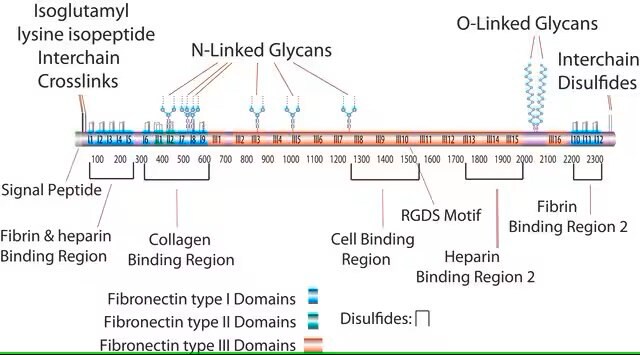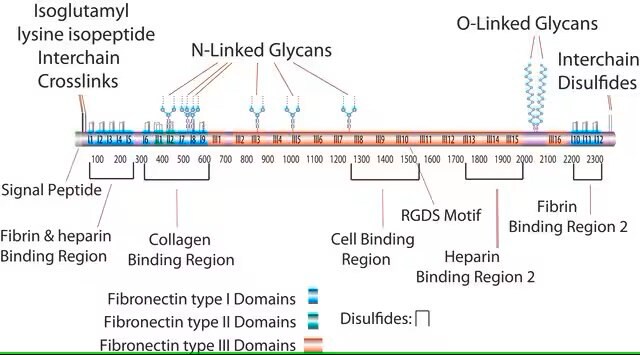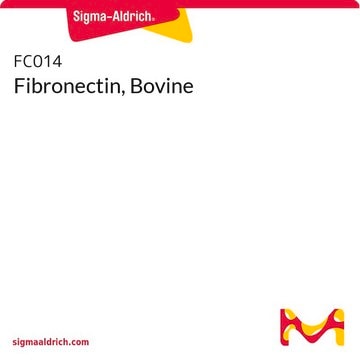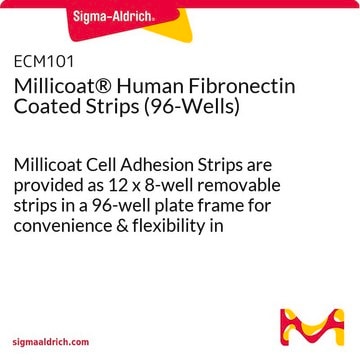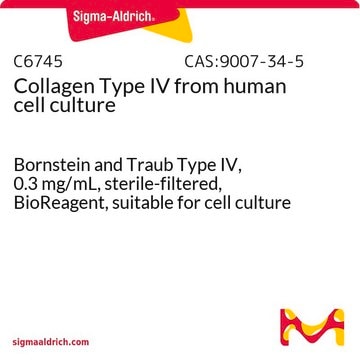F0556
Human Fibronectin
from human fibroblasts, liquid, ~0.5 mg/mL, suitable for cell culture
Sinônimo(s):
Fibronectin
About This Item
Produtos recomendados
Nome do produto
Fibronectina, cell culture derived, ~0.5 mg/mL, sterile-filtered, BioReagent, suitable for cell culture
fonte biológica
human fibroblasts
Nível de qualidade
esterilidade
sterile-filtered
linha de produto
BioReagent
Formulário
solution
peso molecular
31 kDa
embalagem
pkg of 100 μL
concentração
~0.5 mg/mL
técnica(s)
cell culture | mammalian: suitable
Impurezas
HBSAG, none detected
HCV, none detected
HIV-1/HIV-2, none detected
nº de adesão NCBI
nº de adesão UniProt
Especificidade de ligação
Peptide Source: Collagen
Condições de expedição
dry ice
temperatura de armazenamento
−20°C
Informações sobre genes
human ... FN1(2335)
Procurando produtos similares? Visita Guia de comparação de produtos
Descrição geral
Aplicação
- It is used in purification of human extracellular matrix (ECM)
- Coating of tissue culture plates with extracellular matrix components
- Used during cell culture (For xeno-free, feeder-free culture the cells were passaged in to human fibronectin along with other components)
Fibronectin from human plasma can be used with epithelial cells, mesenchymal cells, neuronal cells, fibroblasts, neural crest cells, and endothelial cells. It is recommended for use as a cell culture substratum at 1-5 μg/cm2 or 0.5-50 μg/mL. The optimal concentration does depend on cell type as well as the application and research objectives.
Ações bioquímicas/fisiológicas
Componentes
Atenção
Nota de preparo
Código de classe de armazenamento
11 - Combustible Solids
Classe de risco de água (WGK)
WGK 3
Ponto de fulgor (°F)
Not applicable
Ponto de fulgor (°C)
Not applicable
Equipamento de proteção individual
Eyeshields, Gloves, type N95 (US)
Escolha uma das versões mais recentes:
Já possui este produto?
Encontre a documentação dos produtos que você adquiriu recentemente na biblioteca de documentos.
Os clientes também visualizaram
Artigos
Extracellular matrix proteins such as laminin, collagen, and fibronectin can be used as cell attachment substrates in cell culture.
Protocolos
Dilute fibronectin for cell attachment, varying per cell type. Coating protocol, products, and FAQs provided.
Nossa equipe de cientistas tem experiência em todas as áreas de pesquisa, incluindo Life Sciences, ciência de materiais, síntese química, cromatografia, química analítica e muitas outras.
Entre em contato com a assistência técnica

